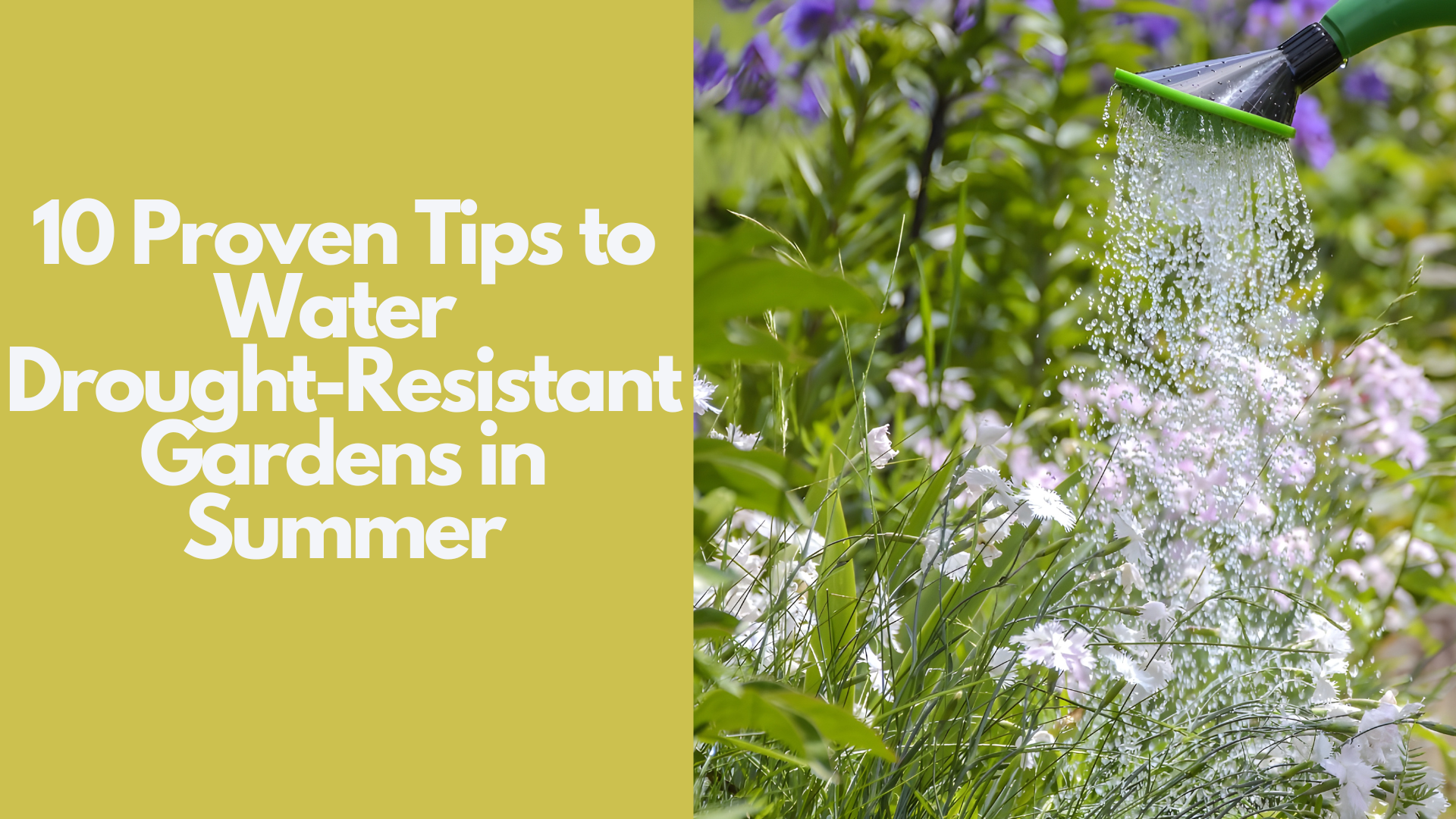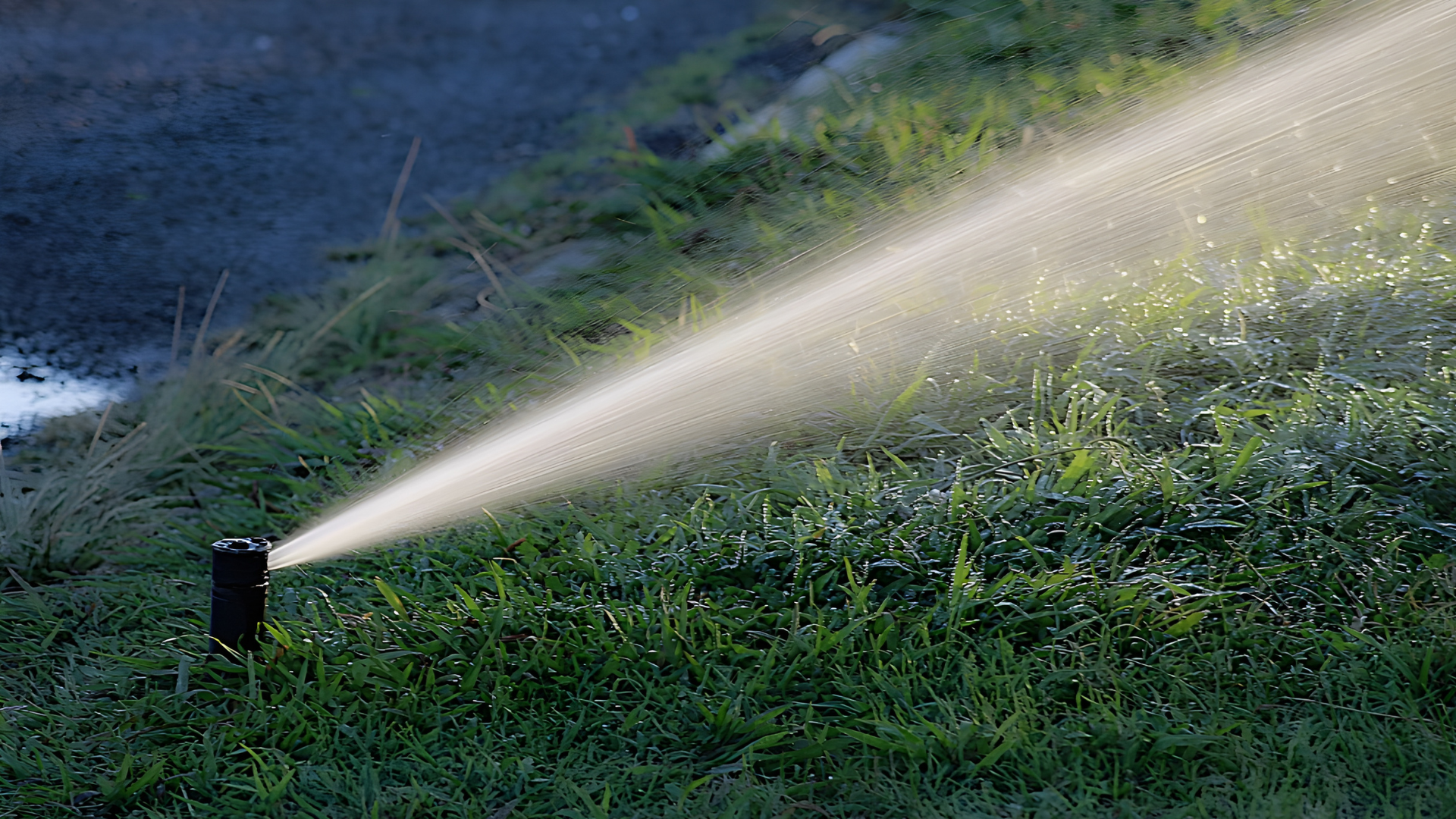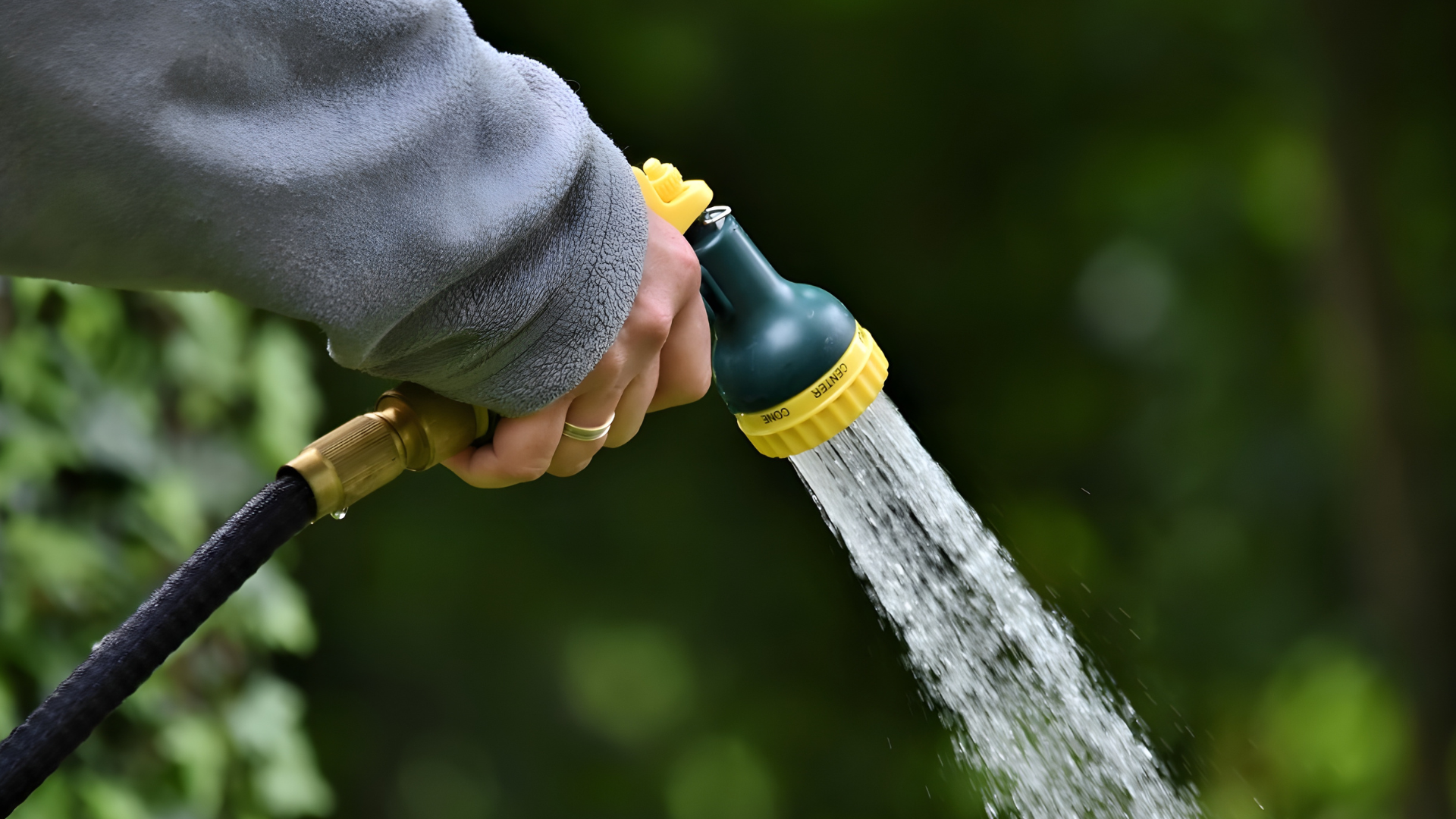If you want to keep your garden thriving through the hottest months, it’s essential to know how to water drought-resistant gardens in summer effectively. This guide covers smart watering schedules, efficient irrigation tools, and proven techniques like deep watering, mulching, and grouping drought-tolerant plants to help your garden survive and thrive even in extreme heat. Learn how to conserve water while still giving your plants exactly what they need to stay strong, green, and healthy all summer long. By reading this guide, you will be able to know, 10 Proven Tips to Water Drought-Resistant Gardens in Summer.

Why do drought-prone gardens need smarter irrigation strategies during the summer?
Gardening during the summer in drought-prone areas comes with unique challenges. Here’s why smart watering strategies are essential:
- Rising temperatures increase evaporation, causing water to vanish before it reaches plant roots.
- Water restrictions limit how and when you can irrigate your garden.
- Soil moisture loss happens faster in dry climates, leading to stressed and dehydrated plants.
- Outdated watering methods often waste more water than they save.
- Efficient techniques ensure your garden stays healthy while conserving resources.
How to understand your garden’s drought risk?
Before applying any summer watering tips, it’s essential to assess how vulnerable your garden is to drought. Every garden has unique factors like soil type, sunlight exposure, and plant selection that impact how well it handles dry conditions. Understanding these variables will help you create a water-saving garden plan that keeps your plants healthy all season long.
Here’s how to evaluate your garden’s drought risk:
- Identify your soil type
The foundation of a drought-resilient garden starts with soil. Sandy soil drains quickly, clay retains water longer, and loamy soil offers the best balance. Test your soil to see how well it holds moisture. - Monitor sun exposure & heat levels
Areas with full sun or reflective surfaces (like pavement or walls) tend to dry out faster. These microclimates may need extra attention and more frequent watering. - Check drainage & slope
Poor drainage can cause water to run off before plants absorb it. Gardens on slopes or compacted soil are at higher drought risk unless adjusted with proper landscaping techniques. - Know your plant types
Native and drought-tolerant plants naturally need less water. If your garden includes thirsty plants like ferns, hydrangeas, or tropicals, your drought risk is higher. - Watch for early drought stress signs
Wilting, dry leaf tips, and faded color are early indicators your garden isn’t retaining enough moisture.
What are the best summer watering techniques for drought-prone gardens?
When it comes to summer watering tips for drought-prone gardens, using the right techniques can make all the difference. These 10 proven strategies help reduce water waste, encourage deeper root growth, and keep your garden thriving even in hot, dry weather.
- Deep watering over frequent sprinkling
Deep, infrequent watering is key to sustainable garden care, as it encourages plants to develop strong, deep root systems. This makes them more drought-tolerant and resilient in the long run. Instead of watering lightly every day, which promotes shallow roots and increases water loss through evaporation, it’s best to water your garden slowly and thoroughly two to three times a week.
The exact frequency can vary depending on the weather and soil type, but the goal is always to ensure the water reaches deep into the soil where roots can absorb it effectively.
- Water at the right time of day
Watering your garden early in the morning, ideally before 10 AM, is the most effective way to hydrate your plants.
Cooler temperatures during this time reduce water evaporation, allowing more moisture to reach the roots. If morning watering isn’t possible, evening is the next best option, but be careful not to wet the leaves at night, as this can promote fungal diseases. It’s best to avoid watering during midday when the sun is at its peak, as most of the water will evaporate before it can soak into the soil.
- Use efficient tools & DIY systems
Using efficient tools and DIY watering systems can greatly enhance your garden’s water efficiency. Soaker hoses and drip irrigation systems are excellent choices, as they deliver water directly to the root zone, minimizing waste.
You can also try creative DIY solutions like burying clay pots (ollas) or using upcycled plastic bottles to provide slow, consistent watering. To take the guesswork out of watering, consider adding a timer to your hose or drip system to ensure regular and efficient water delivery without overuse.
- Group plants with similar water needs
Group plants with similar moisture needs together to conserve water and prevent overwatering in your garden. This technique, known as hydrozoning, ensures each plant receives the right amount of water without waste, making your drought-prone garden more efficient and low-maintenance.
- Use shade to reduce water loss
Strategically use shade to protect delicate plants from intense afternoon sun. Shade cloths, taller plants, or garden structures can lower soil temperatures and reduce evaporation, helping you water less frequently while keeping your plants healthy in the summer heat.
- Install a drip irrigation system
Drip irrigation is one of the best summer watering techniques for drought-prone gardens. It provides water directly to plant roots, reducing evaporation and runoff for more efficient irrigation. It’s ideal for conserving water and keeping your garden hydrated exactly where it counts.
- Add water-retaining soil amendments
Improve your garden’s water retention by mixing in organic matter like compost, coconut coir, or aged manure. These amendments enhance soil structure, help hold moisture longer, and reduce the need for constant watering during hot summer days.
- Monitor soil moisture before watering
Avoid guessing when your garden needs water. Use a soil moisture meter or simply check the soil 1–2 inches below the surface. Only water when it’s dry at that depth. This simple habit prevents both overwatering and water waste.
- Harvest rainwater for sustainable irrigation
Capture rainwater in barrels or tanks to supplement your garden’s water supply during dry spells. Rainwater is free, eco-friendly, and naturally soft, making it perfect for drought-prone gardens. Pair it with a soaker hose for a sustainable watering solution.
- Mulch and water for a maximum moisture retention
Pairing mulch with your watering routine is one of the best ways to retain soil moisture. Applying 2–3 inches of organic mulch such as bark, straw, or compost-around your plants helps lock in moisture, reduce evaporation, suppress weed growth, and regulate soil temperature. This simple step can make a significant difference in the health and sustainability of your garden.
How to maximize moisture retention naturally?
One of the most effective ways to create a drought-resistant garden is by improving your soil’s ability to hold moisture. The more water your garden retains naturally, the less you’ll need to irrigate. Here are smart, sustainable strategies to maximize moisture retention without relying on constant watering.
- Apply organic mulch for long-lasting moisture
Using organic mulch is one of the most effective ways to retain moisture in your garden during the hot summer months. Mulch acts as a protective barrier over the soil, reducing water evaporation and helping to keep the soil cooler.
Natural options like straw, bark chips, shredded leaves, or compost are ideal for this purpose. For the best results, apply a 2–3 inch layer of mulch around your plants, taking care to leave a small gap around the base of each stem to prevent rot. In addition to conserving moisture, mulch also suppresses weeds and gradually improves soil quality over time.
- Choose companion plants that conserve water
Strategic companion planting can significantly improve water efficiency in your garden. Some plant combinations naturally provide shade or help retain soil moisture.
Ground covers like thyme or creeping rosemary reduce surface evaporation, while taller plants can offer shade to more water-thirsty species growing beneath them. Grouping native or drought-tolerant plants together also simplifies garden care and reduces water needs, making your landscape more sustainable and low-maintenance.
- Use shade strategically to reduce evaporation
Providing shade during the hottest parts of the day is a smart way to minimize water loss. You can use shade cloths, trellises, or garden structures to shield sensitive plants from intense sun.
Position taller plants on the west or south sides of your garden to naturally block the harsh afternoon rays. Trees, fences, and other natural elements can also create beneficial microclimates and serve as windbreaks, further protecting your garden from moisture loss.
- Improve soil structure for better water retention
Healthy soil is essential for water conservation. Incorporate organic compost or aged manure into your garden beds to increase the soil’s ability to hold moisture. Avoid excessive tilling, as it can damage soil structure and reduce its effectiveness in retaining water. Well-structured soil promotes deeper root systems, better drainage, and overall improved plant health, ultimately requiring less water to maintain a thriving garden.
What are the best water-wise plant choices for creating a resilient garden?
Creating a drought-resistant garden starts with choosing the right plants. By selecting water-wise, drought-tolerant plants, you’ll reduce water use, lower maintenance needs, and ensure your garden stays healthy even during long dry spells.
Water-wise gardening doesn’t mean sacrificing color or beauty. It means working with nature, not against it. Below are essential considerations for choosing the best plants for your drought-prone garden.
What are the best native & drought-tolerant plants for each region?
Not all drought-tolerant plants perform the same in every location. Choosing native plants suited to your region ensures they thrive with minimal water:
- Southwest: Agave, Red Yucca, Desert Marigold
- West Coast: California Poppy, Manzanita, Lavender
- Midwest: Coneflower, Little Bluestem, Prairie Dropseed
- Southeast: Black-Eyed Susan, Blanket Flower, Coreopsis
Native plants are naturally adapted to local rainfall, soil, and temperatures, making them ideal for water-saving garden designs.
Perennials vs. Annuals: What’s more water-efficient?
When planning a low-water garden, plant type matters:
- Perennials are long-term, low-water investments. Their deep root systems help them survive dry periods better than shallow-rooted annuals.
- Annual plants typically require regular watering, particularly during the intense heat of summer. To reduce maintenance, consider planting drought-tolerant annuals that can thrive with less frequent watering.
- Combine hardy perennials with drought-friendly ground covers and shrubs for maximum resilience.

How to avoid common summer watering mistakes?
Even well-intentioned gardeners can make watering mistakes that waste water and harm plants-especially in drought-prone areas. By avoiding these common errors, you can make the most of your efforts and keep your garden healthy through the heat.
What are the top summer watering mistakes to avoid?
Here are the summer watering mistakes to avoid.
- Watering at the wrong time of day
Watering your plants during the afternoon can lead to excessive evaporation, making the process less efficient and wasting valuable water. The best time to water is early in the morning when temperatures are cooler and plants can absorb moisture more effectively.
While evening watering is a better alternative than midday, it can increase the risk of fungal diseases due to prolonged moisture on the leaves. To promote healthy growth and water efficiency, aim to water your garden early in the day.
- Overwatering or Underwatering
Both overwatering and underwatering can harm your plants. Overwatering can suffocate roots and lead to problems like yellowing leaves, persistently wet soil, and root rot.
On the other hand, underwatering causes drought stress, resulting in wilting, dry or brittle leaves, and stunted growth. The best way to avoid these issues is to check soil moisture 1–2 inches below the surface before watering. Adjust your watering schedule based on actual plant and soil needs rather than following a fixed routine.
- Watering leaves instead of soil
Spraying water directly onto plant leaves is ineffective and wasteful. It not only wastes water but also increases the risk of diseases, especially in warm or humid conditions. Since plants absorb water through their roots, it’s important to direct water to the base of each plant. Use tools like watering cans or drip irrigation systems to ensure that water goes where it’s needed most—into the soil around the root zone.
- Watering too frequently
Frequent, shallow watering may seem helpful, but it actually encourages plants to develop weak, shallow root systems. These roots are less able to access deep soil moisture and more vulnerable to drought stress. Instead, practice deep, infrequent watering to encourage strong, deep root growth. This approach improves your plants’ drought resistance and overall health.
- Using inefficient tools
Using inefficient watering tools like traditional sprinklers can lead to water loss through overspray and evaporation. To conserve water and better support your plants, opt for efficient tools such as soaker hoses, drip irrigation systems, and moisture meters. These tools deliver water directly to the root zone, minimize waste, and ensure your plants receive the right amount of moisture where it matters most.
What are the smart watering tools for drought-prone gardens?
Save time, reduce water waste, and keep your garden thriving with these smart watering tools—perfect for drought-prone gardens.
- Smart irrigation controllers
Smart irrigation controllers help conserve water by automatically adjusting your watering schedule based on real-time weather conditions and soil moisture levels.
- Soil moisture sensors
Monitor moisture levels to avoid overwatering and keep plants healthy.
- Drip Irrigation with timers
Delivers water directly to roots with less waste and great for raised beds and borders.
- Weather-based apps
Delay watering when rain is coming; automate your schedule easily.
- Rain barrels and Smart gauges
Collect and track rainwater for eco-friendly watering.
Do’s & Don’ts: 10 Proven Tips to Water Drought-Resistant Gardens in Summer | Checklist
Do’s
- Water your garden in the early morning to reduce evaporation and ensure better water absorption.
- Water deeply and less frequently to encourage strong, deep roots.
- Using mulch around your garden helps retain moisture, reduce evaporation, and keep the soil temperature stable.
- Focus water at the base of plants, not on the leaves.
- Organize plants according to their water requirements to make irrigation more efficient and manageable.
- Choose drought-tolerant and native plants for your region.
- Install drip irrigation or soaker hoses for efficient watering.
- Monitor soil moisture regularly before watering again.
- Adjust your watering schedule based on rainfall and temperature fluctuations to make the most of water usage.
Don’ts
- Avoid watering your garden between 10 AM and 4 PM, when the sun is at its hottest.
- Don’t overwater or leave soil soggy-this causes root rot.
- Don’t spray water on plant leaves in hot weather.
- Don’t rely on sprinklers for targeted garden beds.
- Don’t ignore signs of drought stress, like wilting or leaf curl.
- Don’t water on windy days-it increases evaporation.
- Don’t forget to check your local watering restrictions during drought alerts.
Watch Top plants that tolerate drought and heat | Video
FAQs and Answers related to 10 Proven Tips to Water Drought-Resistant Gardens in Summer
How often should you water your garden during drought conditions to maintain plant health?
Water deeply 2–3 times per week, depending on your soil type and plant needs. Avoid shallow, daily watering since it leads to weaker roots.
What time of day is best for watering in summer?
Early morning (before 10 AM) is ideal to reduce evaporation and allow plants to absorb moisture before peak heat.
Can I still use sprinklers in a drought-prone garden?
Sprinklers waste water through overspray and evaporation. Drip irrigation or soaker hoses are more efficient for drought conditions.
What are the best plants for drought-resistant gardens?
Native and drought-tolerant plants like lavender, coneflower, agave, and rosemary thrive with minimal water.
Are smart irrigation systems worth it?
Absolutely. Smart controllers and soil sensors adjust watering automatically, saving water and time in the long run.
Conclusion
Summer watering can be a challenge, especially for drought-prone gardens, but with the right techniques, you can ensure your plants stay healthy and hydrated. By applying tips like watering deeply, mulching, and using efficient tools like drip irrigation, you can conserve water while promoting stronger, more resilient plants.
Keep in mind, it’s not about watering more. It’s about watering more efficiently. Adjust your routine based on your garden’s needs, weather conditions, and the types of plants you’re growing.
With these essential watering strategies, your garden can thrive even in the harshest summer conditions, all while conserving precious water resources. Start implementing these tips today, and watch your drought-prone garden flourish throughout the season.
We will meet you on next article.
Until you can read, https://gardengeo.com/how-does-cold-water-affect-plant-growth-risks/
